Doubled productivity through meticulous planning and on-site optimization!
Practical collaboration with AMR without large-scale construction (Part 1)
For companies seeking to improve their logistics warehouse operations by implementing collaborative robots, gaining insights from businesses that have already implemented them can be highly beneficial. In this article, we will provide valuable insights into the reality of AMR implementation, featuring interviews and case studies on the implementation of Rapyuta AMR.
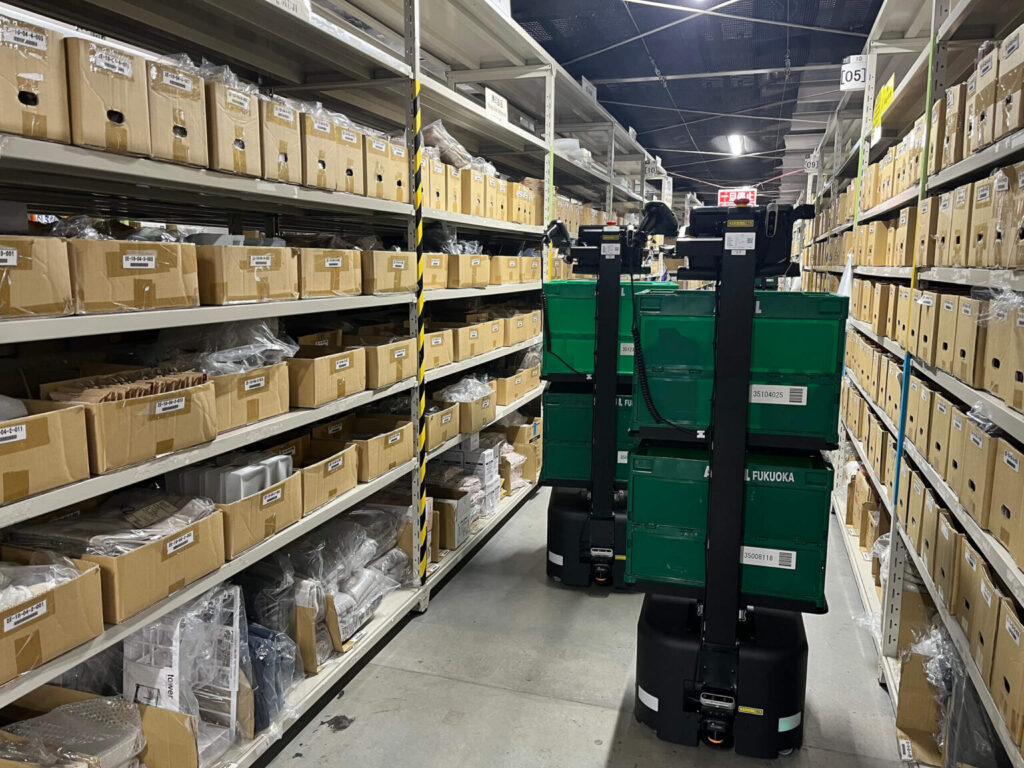

ASKUL Corporation
ASKUL Value Center Hidaka (AVC Hidaka)
Industry: In-house EC
Number of Units installed: 34
AMR Operation Date: April 2022 –
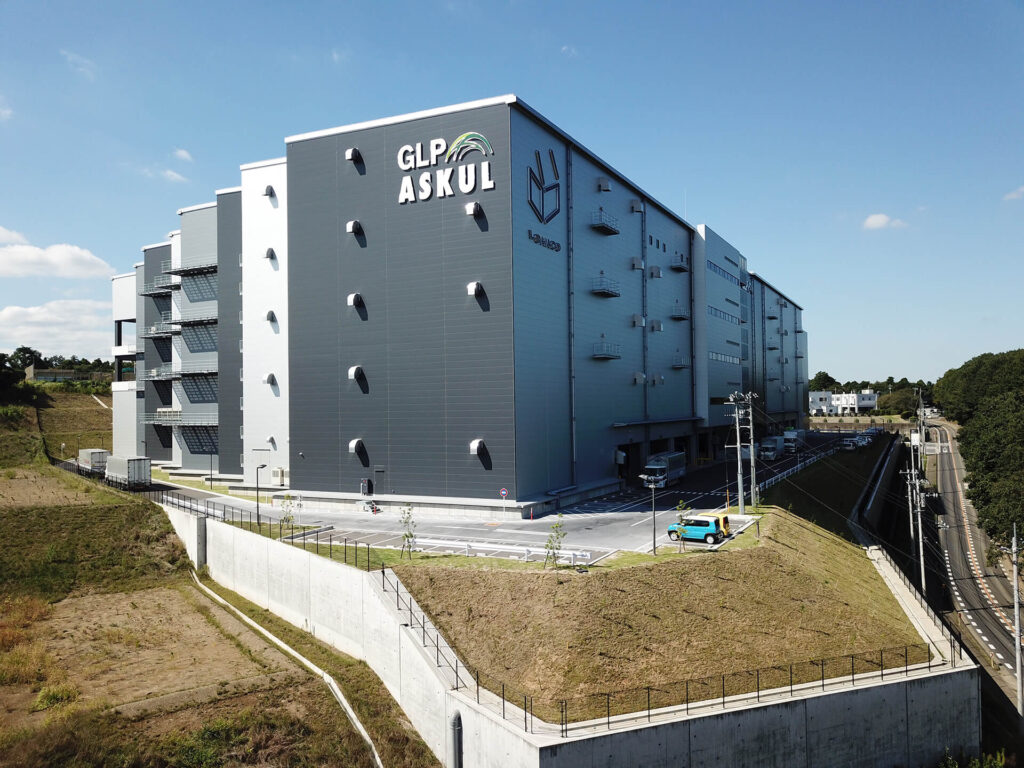
The company featured in this case study is Askul Corporation, which is involved in both business-to-business (BtoB) and business-to-consumer e-commerce (BtoC). The company introduced 34 Rapyuta PA-AMRs into a 2,314-square-meter area at the Askul Value Center Hidaka (AVC Hidaka) in Saitama prefecture, which serves as the main base for its consumer e-commerce site, LOHACO. They started full-scale operation in spring 2022 after considering the use of AMRs since 2020. Through meticulous simulation and requirement refinement during this period, the site and AMRs fit seamlessly from the beginning of the operation. Just over four months after implementation, they achieved high performance that surpassed the simulation conducted before the introduction.
This time, we had the opportunity to interview the person who was involved in the planning and introduction of Rapyuta PA-AMRs. Through a Q&A format, we delve into how ASKUL proceeded with the introduction and the key factors that led to its successful implementation. With a focus on providing a comprehensive and authentic perspective from the introduction site, we present their valuable insights in two parts providing informative content.
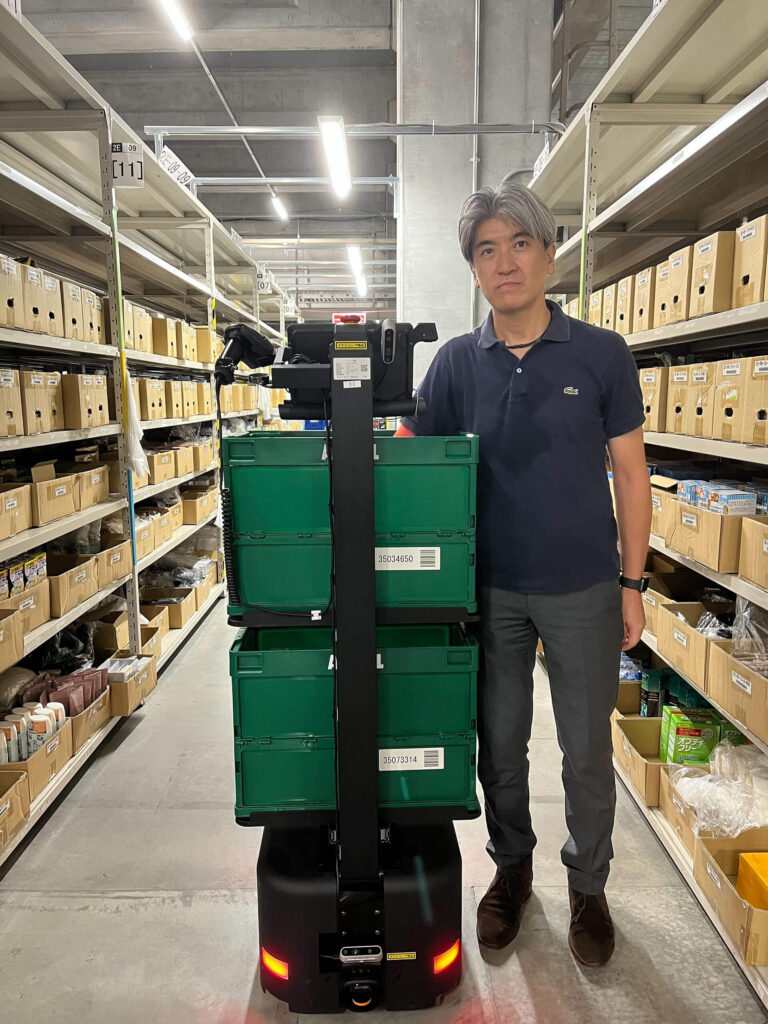
<Interviewee>
ASKUL Corporation
Logistics Division
Logistics Strategy Planning, Logistics Planning
Mr. Motohiro Takahashi
INDEX
<Part 1>
- Why ASKUL considered using logistics robots (Rapyuta PA-AMR)
- Characteristics of the warehouse where AMRs are installed
- Reasons and process behind ASKUL’s decision to use Rapyuta PA-AMR
- ASKUL’s unique requirements requested at the time of introduction
<Part 2>
- AMRs as perceived in pre-introduction simulations
- Minimal changes and adjustments required on-site upon the introduction of AMRs
- Onsite reactions
- Staff training
- Unique measures employed in the operation
- Comparison of productivity before and after AMR introduction
- Rapyuta’s support system
- Challenges encountered with AMR during operation
- Three points that make an ideal warehouse environment for AMR introduction
- Expansion of AMR introduction to other sites
Q. What led to the consideration of using the logistics robot (Rapyuta PA-AMR)?
The conventional picking method involved pushing a cart and picking with a handheld terminal, which was not very productive, and improving productivity was a challenge.
AVC Hidaka is a distribution center that operates 365 days a year and cannot be shut down, so it was difficult to introduce GTP equipment that would require large-scale layout changes and construction work.
Therefore, we chose an AMR solution that could improve productivity with minimal construction such as power supply installation for charging and access point installation, and minor layout changes, without interrupting operations.
Q. Could you describe the characteristics of the warehouse where AMR was introduced this time?
AVC Hidaka is a base for eastern Japan that is exclusively dedicated to LOHACO. LOHACO is a BtoC online shopping service with the concept of “making customers’ lives easier and more enjoyable” by offering a wide range of daily necessities, such as food, beverages, stationery, pharmaceuticals, and cosmetics. The product categories are diverse, and the AMRs introduced this time will be used primarily for low to medium frequency products.
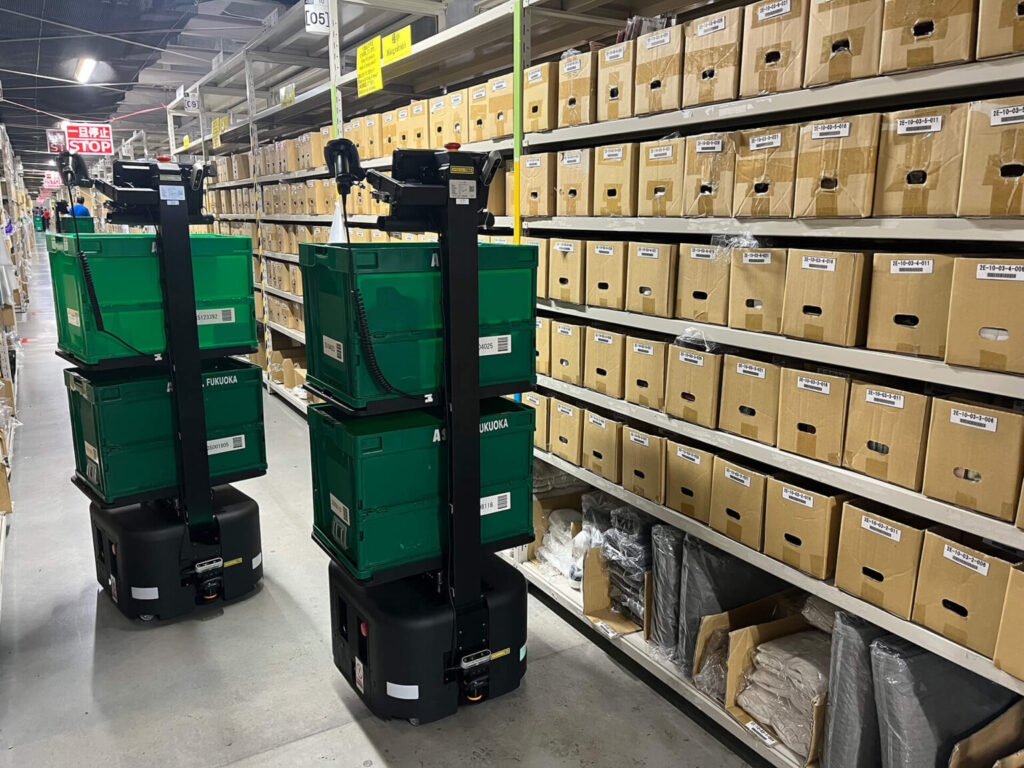
Keypoint: Having scoured Japan for information on AMRs, we settled on Rapyuta as the best option!
Q: Could you explain the reasons and process behind ultimately choosing the Rapyuta PA-AMR for implementation?
As part of our AMR selection process, we contacted manufacturers and distributors of AMRs in Japan around 2020 and conducted a comparative analysis from various perspectives such as hardware and software. The deciding factor in choosing Rapyuta was that their AMR could carry two containers as standard equipment. At the time, the specification was for two 50L containers, but they were able to accommodate two 60L containers used by ASKUL. Moreover, they were willing to actively consider the various additional functions we requested, resulting in the incorporation of the necessary features. This was also a significant factor in our decision to introduce their product.
Q. What were ASKUL’s unique requirements that you requested when introducing the system?
One of the main requirements was support for tracking work. The tracking function allows us to monitor work performed by individuals, and we use this data to improve productivity and reduce errors. The current Rapyuta AMR tracks who did what work in a log format, and this information is integrated into the WMS system to confirm individual productivity, among other data.
In addition, some of the existing functions of the Rapyuta AMR were upgraded to be more useful on site. For example, there were times when the AMRs would cluster in one location, causing congestion in the aisles. In such situations, the “Mark as reached” button is very useful. Pressing this button allows for picking work to be done in place, even if the robot is waiting at the front of the aisle. This eliminates the need for workers to wait for the robot to clear the way. Initially, there were restrictions on when the button could be pressed, but we were able to have it enabled at all times.
Furthermore, the Picker Guidance System, which was included in the basic specifications, is an excellent feature. It indicates the next picking location (next robot location) when one picking of a product is complete. This function reduces wasted time spent walking around to locate the robot, and thus improves productivity. It was satisfying to have precise functions that met the demands of on-site operations.
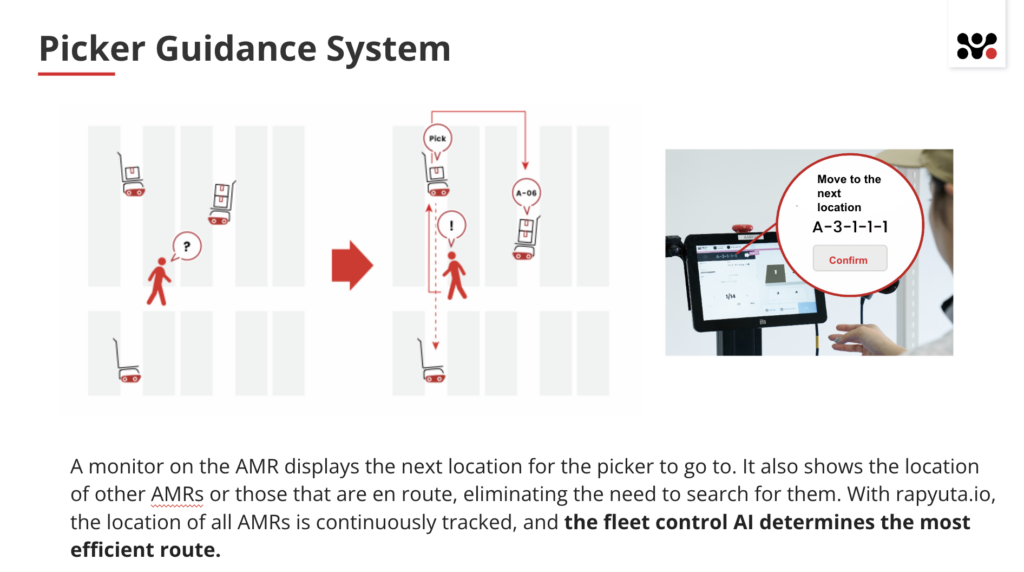
<Summary of Part 1>
The Rapyuta PA-AMR demonstrated the potential to solve ASKUL’s challenges. In actual implementation, we performed more accurate adjustments and improved its performance. The second part of the interview will cover the specifics of these improvements.



